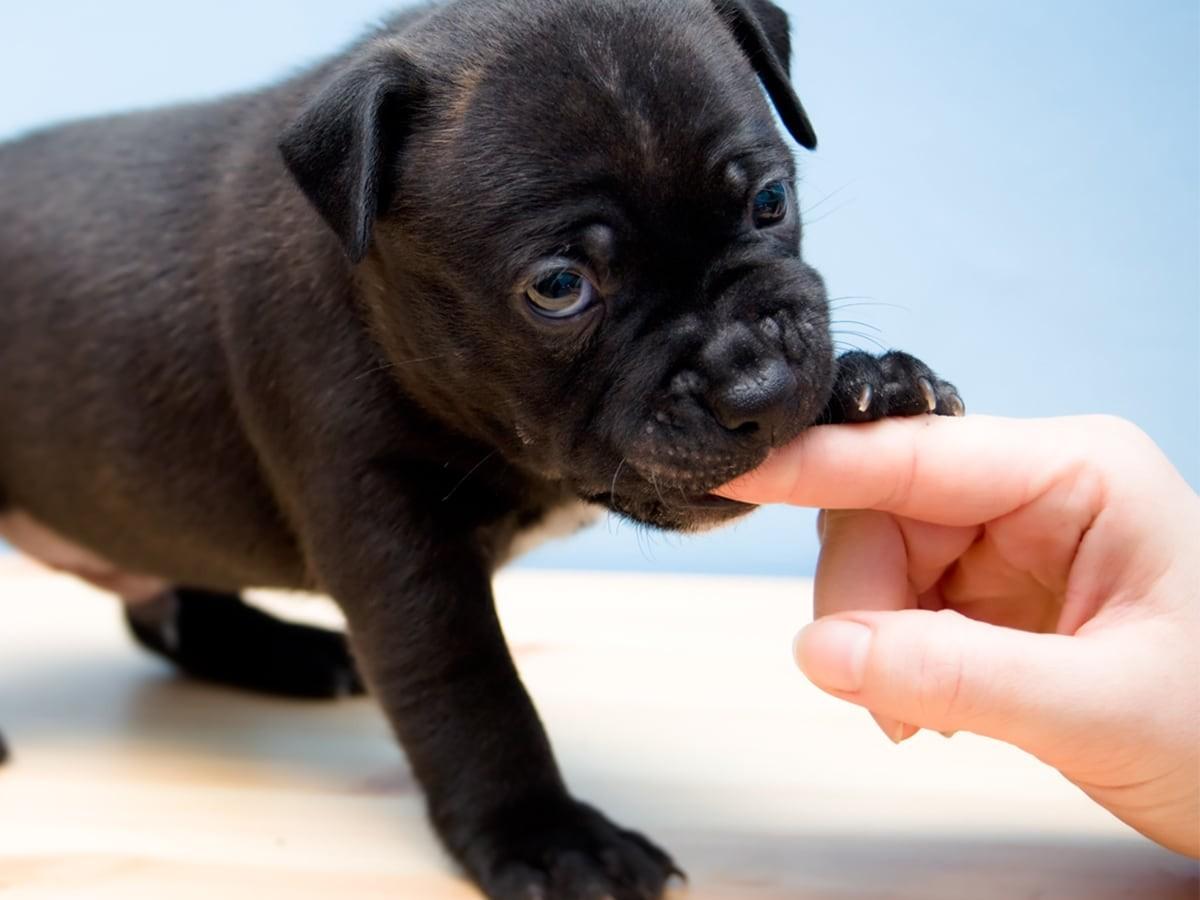Welcoming a puppy into your home is an exciting time! But along with puppy cuddles and playful antics comes a less-than-adorable phase: teething. Understanding this natural process can help you support your furry friend and minimize discomfort.
When Does Puppy Teething Start?
Puppies are born without teeth. Within the first few weeks of life, their baby teeth (also called milk or deciduous teeth) begin to emerge. Around five to six weeks old, puppies usually have a full set of 28 sharp baby teeth.
Puppy Teething Pain: Signs and Solutions
Teething can be quite uncomfortable for a growing pup. Here's how to spot the signs and offer relief:
Symptoms:
Excessive chewing and gnawing
Mild whimpering or crying
Swollen or slightly red gums
Drooling
Slight loss of appetite
Small spots of blood on toys (from lost teeth)
Solutions for Soothing Puppy Teething:
Safe chew toys: Offer toys designed for teething puppies – rubber toys or frozen washcloths.
Frozen treats: Freeze dog-safe fruits or vegetables like carrots or blueberries for a cooling, tasty treat.
Gentle gum massage: If tolerated, use a clean finger to gently massage their gums, easing soreness.
Puppy Teething Timeline
Here's a general breakdown of the puppy teething process:
2-4 Weeks: Baby teeth begin to emerge.
5-8 Weeks: All baby teeth are usually present.
12-16 Weeks: Adult teeth start pushing through, replacing baby teeth. You might find the tiny lost teeth around the house!
6 Months: Teething typically concludes, and your pup has a full set of 42 adult teeth.
Puppy Teething Tips: Caring for Your Chewing Companion
In the article “Care for Your Teething Puppy With These 4 Tips”, DVM Mallory Kanway suggests practical tips to support your puppy and minimize those chewing mishaps (2023):
Puppy-Proof Your Home
Prevent Destruction: Remove anything you don't want chewed – from medications and cleaning supplies to shoes and electrical cords. Ensure any houseplants are non-toxic to dogs.
Safe Zone: Create a designated, puppy-safe area with a cozy crate, water bowl, soft bedding, and space for play.
Stock Up on Puppy Teething Toys
Chew Time: Invest in various puppy toys, offering a mix of rubber and soft options. Rotate these toys to maintain their novelty.
Avoid Hard Toys: Steer clear of very hard bones or toys that don't yield slightly when you push on them – these can damage those growing teeth.
Great Choices: Consider classics like KONG toys, soft teething rings, or chew toys specifically designed for puppies.
Embrace Frozen Goodies
Soothing Treats: Frozen toys and goodies can offer fantastic relief for aching gums.
DIY: Fill a KONG with puppy food and water, freeze, and offer for a tasty, long-lasting distraction.
Healthy Options: Frozen carrots, blueberries, or seedless watermelons are dog-friendly choices. Avoid ice cubes, as they're too hard for puppy teeth.
Practice Soft-Mouth Training
Redirect: If your puppy gets mouthy during playtime, swiftly offer a toy. If they persist, calmly withdraw attention. This teaches them biting doesn't earn interaction.
Positive Reinforcement: Reward good behavior (like choosing a toy) with praise, treats, and gentle play. This builds a strong bond and encourages desirable habits.
Seek Guidance: If your puppy exhibits aggression over toys or persistent biting, consult your veterinarian for advice.
FAQ: Frequently Asked Questions About Puppy Teething
How long does puppy teething last? The teething process generally lasts about six months.
Can I give my puppy ice for teething? Yes, but always supervise. Ice cubes offer temporary relief but can be hard on tiny teeth. Frozen wet washcloths are gentler.
How can I help my teething puppy? Chew toys, frozen treats, gentle gum massage, and bite-training are all helpful.
What is the most painful puppy teething stage? The stage when baby teeth are lost and adult teeth erupt (around 12-16 weeks) tends to be the most uncomfortable.
Important Note: If your puppy seems excessively distressed, loses many teeth at once, or has persistent bleeding gums, consult your veterinarian. They can rule out any underlying dental issues.
Additional Tips:
Check for Retained Baby Teeth: Sometimes baby teeth don't fall out as they should. Your vet can safely remove these if needed.
Start Dental Care Early: Get your puppy comfortable with teeth brushing to maintain good oral hygiene throughout their life.
Remember, patience and understanding go a long way during the teething phase. With a little support, your puppy will soon be through this temporary stage!
Key Takeaways
The teething phase is a normal but sometimes challenging part of puppy development. By understanding the timeline, offering soothing solutions, and implementing consistent training, you can help your furry friend navigate this stage with greater comfort. Remember, a little patience and the right support will ensure your puppy emerges from teething with a healthy, happy smile!

If you need a story or someone to talk to your cat like a person, I’m your person. With 3 cats, 1 dog, and a lifetime of pets, I write from experience, usually with a cat on my keyboard and a dog in my lap.
Teeth Teething and Chewing in Puppies | VCA Animal Hospital
When Will My Puppy Stop and Start Teething? | The Spruce Pets
Dental Development of Dogs – Dog Owners | Merck Veterinary Manual
Fluoride Poisoning in Animals – Toxicology | Merck Veterinary Manual











